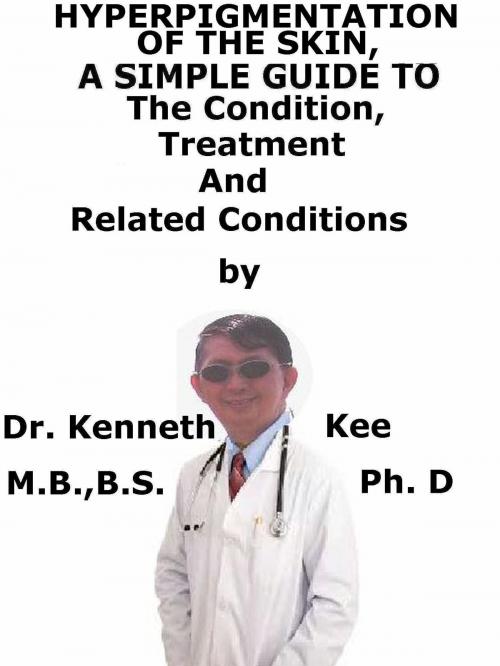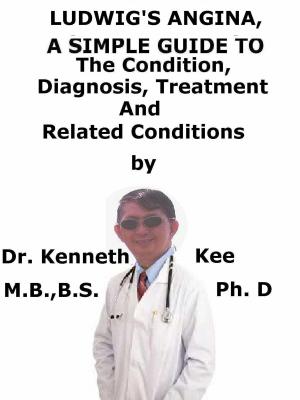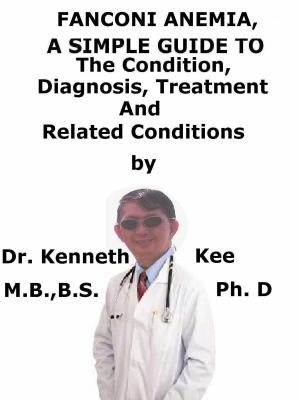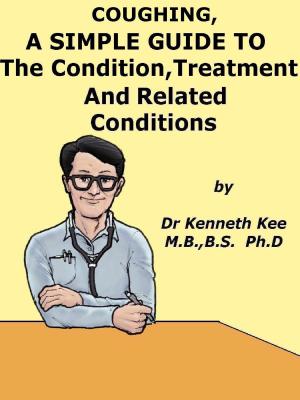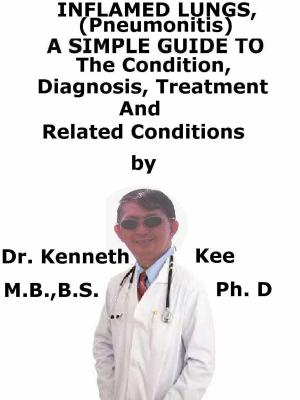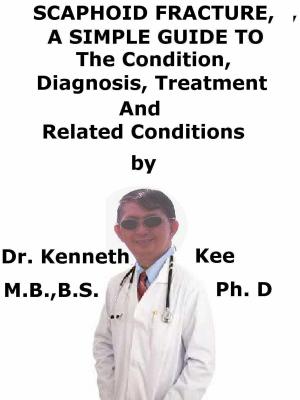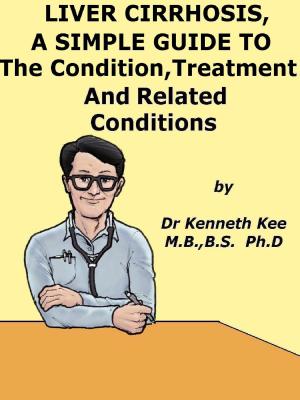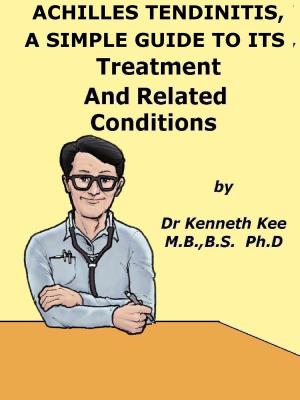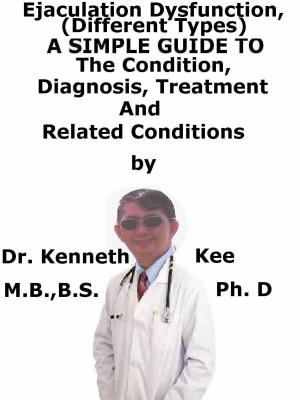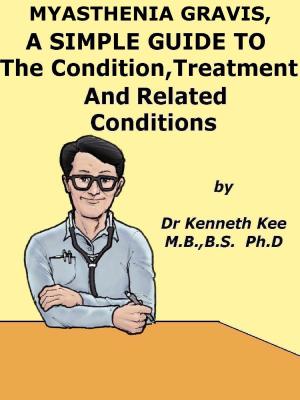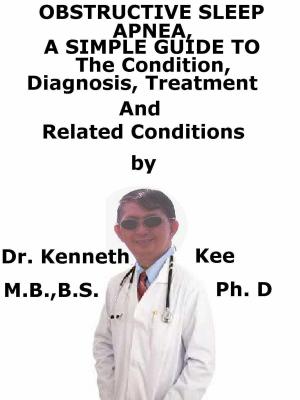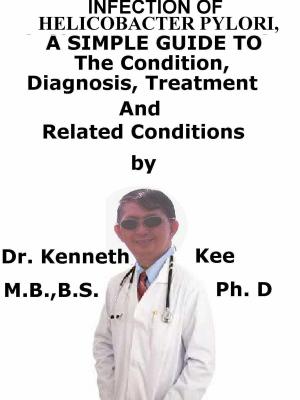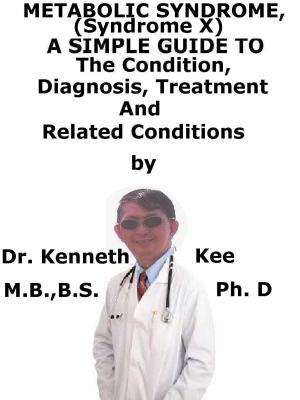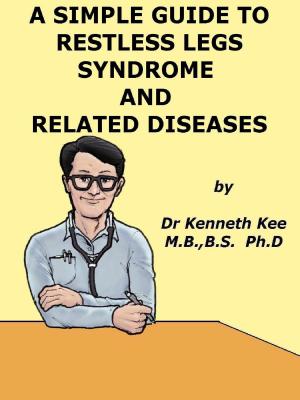Hyper-Pigmentation Of The Skin A Simple Guide To The Condition, Treatment, And Related Conditions
Nonfiction, Health & Well Being, Medical, Specialties, Dermatology, Health, Ailments & Diseases, Skin| Author: | Kenneth Kee | ISBN: | 9781370010967 |
| Publisher: | Kenneth Kee | Publication: | February 16, 2018 |
| Imprint: | Smashwords Edition | Language: | English |
| Author: | Kenneth Kee |
| ISBN: | 9781370010967 |
| Publisher: | Kenneth Kee |
| Publication: | February 16, 2018 |
| Imprint: | Smashwords Edition |
| Language: | English |
This book describes the Hyper Pigmentation of the Skin Diseases such as Melasma, Post Inflammatory Hyper-pigmentation and Lentigines
Hyper-pigmentation is the darkening of an area of skin caused by increased melanin.
Melanin is the pigment found in skin, eyes and hair
Ode to Hyper-pigmentation
Hyper-pigmentation is the darkening of an area of skin
This is caused by an increase of skin melanin.
The most common types of hyper-pigmentation of the skin
Are post-inflammatory hyper-pigmentation, melasma and lentigines
PIH is caused by increased pigment after infection or injury
Melasma is often due to oral contraceptives, sun exposure or pregnancy
Lentigines are light brown skin due to chronic sun exposure
These are the main pigmented conditions in women who are mature
Topical treatment consists of a triple combination cream medication
The use of Quality lasers has improved the treatment of hyper-pigmentation
An alternative treatment of laser is intense pulse light therapy
The combined use of a topical cream and laser treatment is the most effective
-An original poem by Kenneth Kee
Treatment of the Hyper-pigmentation
A Healthy Lifestyle
1.Take a well Balanced Diet
2.Treatment of Hyper-pigmentation
Topical treatment
Melasma and lentigines presents a treatment challenge.
Topical treatment of a triple combination cream containing hydroquinone, retinoid and a mild steroid has been proven to be effective compared to other agents such as hydroquinone alone or kojic acid cream, dual combination creams or peels such as glycolic acid, salicylic acid and Jessner
Lasers
The use of lasers is an increasing trend in the treatment of pigmentation.
The most widely used pigment specific lasers are Quality or Q-switched lasers which have nanosecond pulse duration and can selectively target melanosomes which are pigment granules that provide tissues with the color of the skin.
Sunscreen applications before and after laser treatment is strongly recommended.
Patients with darker skin who require treatment with lasers that have longer wavelengths as there is less absorption by epidermal melanin at a longer wavelength resulting in lower risk of epidermal injury and pigment alterations
Intense pulsed light
An alternative treatment of laser is intense pulse light or IPL which uses a broad spectrum of wavelengths that can be changed for each patient to target specific structures in the skin.
The light energy absorbed by the melanin in the keratinocytes and melanocytes causes them to coagulate and form mini-crusts which later shed resulting in clinical improvement of pigmentations.
The combined use of a topical triple combination cream and laser treatment in conjunction with sun protection appears to be more effective than a mono therapy approach.
3.Keep bones and body strong
Bone marrow produces our blood
Eat foods rich in calcium like yogurt, cheese, milk, and dark green vegetables.
Eat foods rich in Vitamin D, like eggs, fatty fish, cereal, and fortified milk.
Eat food rich in Vitamins B and C such as green vegetables and fruits
Zinc and other minerals are important to the body
4.Get enough rest and Sleep
Avoid stress and tension
5.Exercise and stay active.
It is best to do weight-bearing exercise such as walking, jogging, stair climbing, dancing, or lifting weights for 2½ hours a week.
One way to do this is to be active 30 minutes a day at least 5 days a week.
Begin slowly especially if a person has not been active.
6.Do not drink more than 2 alcohol drinks a day for a man or 1 alcohol drink a day for a woman.
Alcohol use also increases the chance of falling and breaking a bone.
Alcohol can affect the neurons and brain cells.
7.Stop or do not begin smoking.
It also interferes with blood supply and healing
TABLE OF CONTENT
Introduction
Chapter 1 Hyper-pigmentation
Chapter 2 More about Hyper-pigmentation
Chapter 3 Treatment of Hyper-pigmentation
Chapter 4 Freckles
Chapter 5 Tinea Corporis
Chapter 6 Lichen planus
Chapter 7 Melanoma and Nevi
Epilogue
This book describes the Hyper Pigmentation of the Skin Diseases such as Melasma, Post Inflammatory Hyper-pigmentation and Lentigines
Hyper-pigmentation is the darkening of an area of skin caused by increased melanin.
Melanin is the pigment found in skin, eyes and hair
Ode to Hyper-pigmentation
Hyper-pigmentation is the darkening of an area of skin
This is caused by an increase of skin melanin.
The most common types of hyper-pigmentation of the skin
Are post-inflammatory hyper-pigmentation, melasma and lentigines
PIH is caused by increased pigment after infection or injury
Melasma is often due to oral contraceptives, sun exposure or pregnancy
Lentigines are light brown skin due to chronic sun exposure
These are the main pigmented conditions in women who are mature
Topical treatment consists of a triple combination cream medication
The use of Quality lasers has improved the treatment of hyper-pigmentation
An alternative treatment of laser is intense pulse light therapy
The combined use of a topical cream and laser treatment is the most effective
-An original poem by Kenneth Kee
Treatment of the Hyper-pigmentation
A Healthy Lifestyle
1.Take a well Balanced Diet
2.Treatment of Hyper-pigmentation
Topical treatment
Melasma and lentigines presents a treatment challenge.
Topical treatment of a triple combination cream containing hydroquinone, retinoid and a mild steroid has been proven to be effective compared to other agents such as hydroquinone alone or kojic acid cream, dual combination creams or peels such as glycolic acid, salicylic acid and Jessner
Lasers
The use of lasers is an increasing trend in the treatment of pigmentation.
The most widely used pigment specific lasers are Quality or Q-switched lasers which have nanosecond pulse duration and can selectively target melanosomes which are pigment granules that provide tissues with the color of the skin.
Sunscreen applications before and after laser treatment is strongly recommended.
Patients with darker skin who require treatment with lasers that have longer wavelengths as there is less absorption by epidermal melanin at a longer wavelength resulting in lower risk of epidermal injury and pigment alterations
Intense pulsed light
An alternative treatment of laser is intense pulse light or IPL which uses a broad spectrum of wavelengths that can be changed for each patient to target specific structures in the skin.
The light energy absorbed by the melanin in the keratinocytes and melanocytes causes them to coagulate and form mini-crusts which later shed resulting in clinical improvement of pigmentations.
The combined use of a topical triple combination cream and laser treatment in conjunction with sun protection appears to be more effective than a mono therapy approach.
3.Keep bones and body strong
Bone marrow produces our blood
Eat foods rich in calcium like yogurt, cheese, milk, and dark green vegetables.
Eat foods rich in Vitamin D, like eggs, fatty fish, cereal, and fortified milk.
Eat food rich in Vitamins B and C such as green vegetables and fruits
Zinc and other minerals are important to the body
4.Get enough rest and Sleep
Avoid stress and tension
5.Exercise and stay active.
It is best to do weight-bearing exercise such as walking, jogging, stair climbing, dancing, or lifting weights for 2½ hours a week.
One way to do this is to be active 30 minutes a day at least 5 days a week.
Begin slowly especially if a person has not been active.
6.Do not drink more than 2 alcohol drinks a day for a man or 1 alcohol drink a day for a woman.
Alcohol use also increases the chance of falling and breaking a bone.
Alcohol can affect the neurons and brain cells.
7.Stop or do not begin smoking.
It also interferes with blood supply and healing
TABLE OF CONTENT
Introduction
Chapter 1 Hyper-pigmentation
Chapter 2 More about Hyper-pigmentation
Chapter 3 Treatment of Hyper-pigmentation
Chapter 4 Freckles
Chapter 5 Tinea Corporis
Chapter 6 Lichen planus
Chapter 7 Melanoma and Nevi
Epilogue
